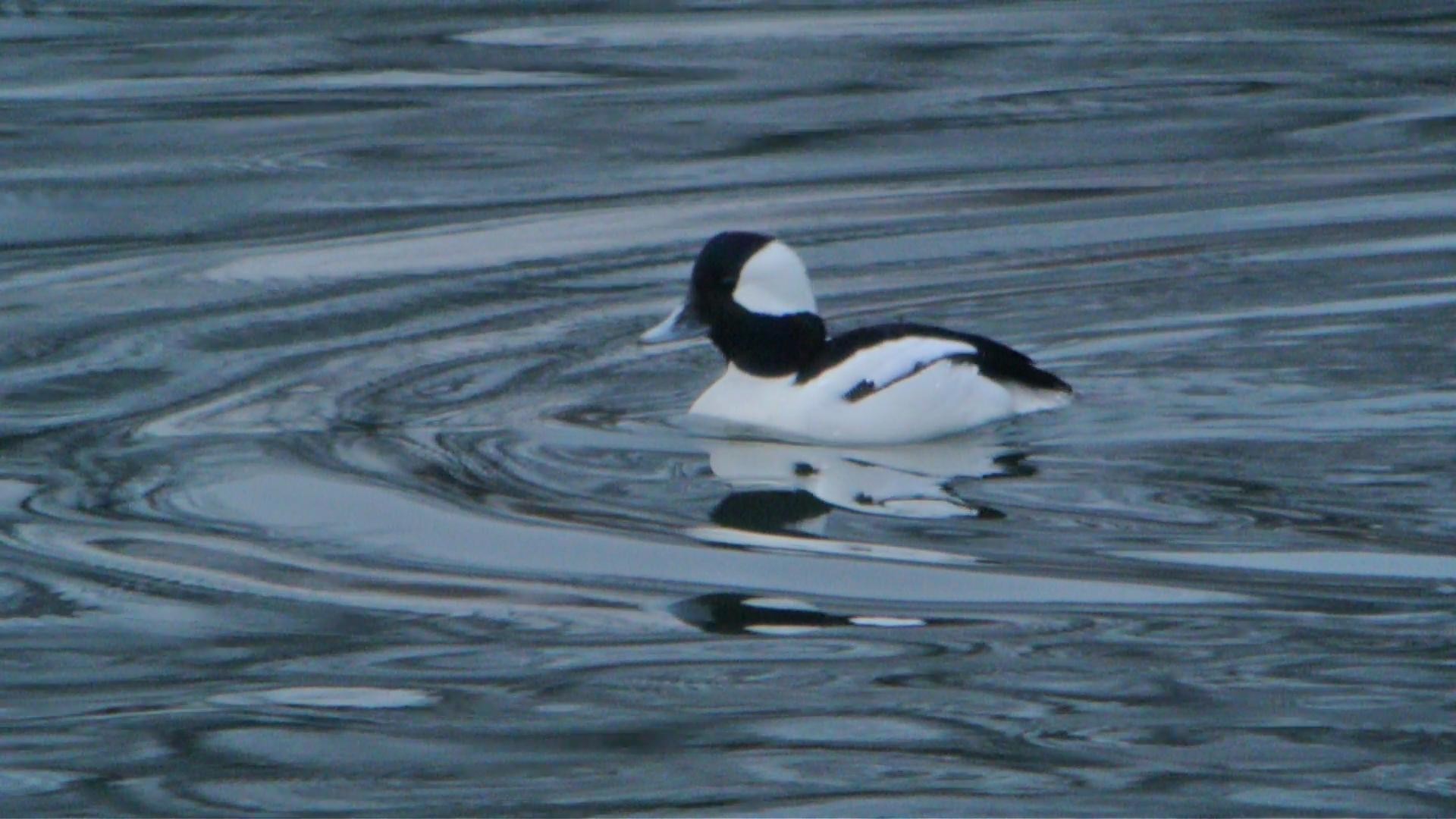Bufflehead
A species of Goldeneyes Scientific name : Bucephala albeola Genus : Goldeneyes
Bufflehead, A species of Goldeneyes
Botanical name: Bucephala albeola
Genus: Goldeneyes
Content
Description People often ask General Info
 Photo By Andy Reago & Chrissy McClarren , used under CC-BY-2.0 /Cropped and compressed from original
Photo By Andy Reago & Chrissy McClarren , used under CC-BY-2.0 /Cropped and compressed from original Description
Don’t be surprised to see bufflehead disappear in the water. It returns to the surface to feed. This duck is often seen in lakes, reservoirs, and bays. The duck often uses old woodpecker holes for nesting but can also be lured to backyards with a nesting box placed close to trees.
Size
33-41 cm (13-16 in)
Colors
Black
Green
White
Purple
Life Expectancy
14 years
Nest Placement
Cavity
Clutch Size
4 - 17 eggs
Feeding Habits
Bufflehead primarily consume aquatic invertebrates, with a varied diet that includes insects, crustaceans, mollusks, and some plant matter. They forage by diving in shallow waters of 1.2-4.5 m depth, swallowing prey underwater. Dive duration averages 12 seconds. Ducklings may also dabble at the surface.
Habitat
Bufflehead inhabit boreal forests and aspen parklands for breeding, primarily around lakes and ponds in Canada, Alaska, and some parts of western United States. Ideally located within the Northern Flickers' range for access to nesting cavities, they prefer wooded areas near water at low to moderate elevations. In winter, bufflehead migrate to coastal waters like estuaries and harbors, as well as inland open waters, opting for ice-free environments such as sheltered coves and bays. They also frequent slow-moving rivers and occasionally visit urban areas near water bodies.
Nest Behavior
Bufflehead's nest building is minimal as they utilize existing cavities—inspecting them during summer and finalizing the choice before egg-laying. Egg deposition occurs in these soft-lined nests, and both parents participate in raising the brood, with females being particularly secretive about nest locations.
Nest Characteristics
Bufflehead nest in tree cavities or nest boxes, which were originally excavated by Northern Flickers or Pileated Woodpeckers. The nests are often found in poplar or aspen trees, excluding California where pine is preferred. Nests are lined exclusively with the female's own downy chest feathers, which insulate and camouflage the eggs.
Dite type
Aquatic invertebrate eater
People often ask
General Info
Feeding Habits
Bird food type
Bird Feeder Type

Platform
Behavior
Bufflehead exhibit buoyant swimming, adept diving capabilities, and initiate flight by skittering across water surfaces. These birds maintain low flight over water and ascend when crossing land. Their dives involve compressing plumage to expel air, followed by a powerful downward thrust. Underwater, they rely solely on their feet for navigation, keeping wings close to their bodies. Bufflehead characteristically resurface as effortlessly as corks popping up. Daily routines include feeding, vigilant swimming, preening, and resting. Rarely on land, bufflehead females only traverse terrain to relocate their offspring to water or shift to different ponds. Courtship displays involve aerodynamic feats and striking water landings with head-bobbing rituals. Territorial disputes during the breeding season are marked by aggressive underwater pursuits and wing thrashing. Intruding bufflehead pairs occasionally incite territory holders to engage in high-speed chases. Unique to their species, males depart from incubating females for molting, yet exhibit remarkable mate fidelity across breeding seasons.
Distribution Area
They are migratory and most of them winter in protected coastal waters, or open inland waters, on the east and west coasts of North America and the southern United States. The bufflehead is an extremely rare vagrant to western Europe. Their breeding habitat is wooded lakes and ponds in Alaska and Canada, almost entirely included in the boreal forest or taiga habitat. 
Species Status
Not globally threatened.